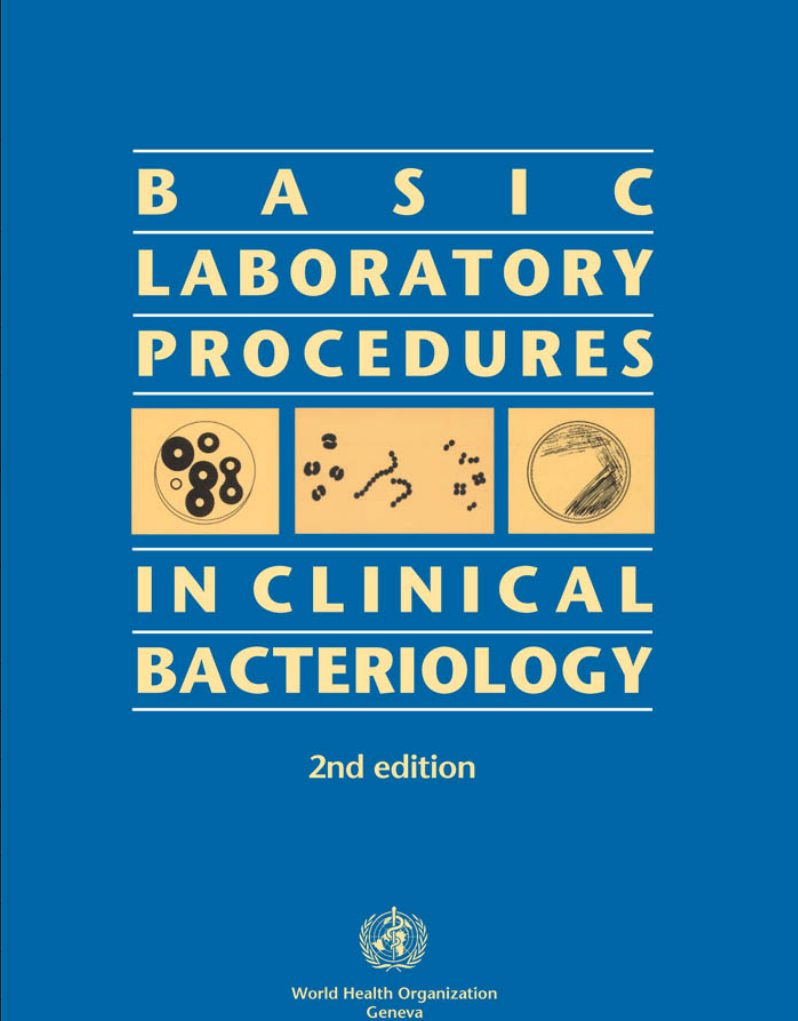Basic laboratory procedures in clinical bacteriology
Contents
Preface viii
Introduction 1
Quality assurance in bacteriology 2
Introduction 2
Definitions 2
Internal quality control 6
External quality assessment 16
PART I : Bacteriological investigations 19
Blood 20
Introduction 20
When and where bacteraemia may occur 20
Blood collection 20
Blood-culture media 22
Processing of blood cultures 23
Cerebrospinal fluid 25
Introduction 25
Collection and transportation of specimens 25
Macroscopic inspection 26
Microscopic examination 26
Preliminary identification 28
Susceptibility testing 29
Urine 30
Introduction 30
Specimen collection 30
Culture and interpretation 32
Interpretation of quantitative urine culture results 34
Identification 35
Susceptibility tests 36
Stool 37
Introduction 37
Etiological agents and clinical features 37
Appropriate use of laboratory resources 39
Collection and transport of stool specimens 40
Visual examination of stool specimens 41
Enrichment and inoculation of stool specimens 41
Media for enteric pathogens 42
Primary isolation 42
Preliminary identification of isolates 44
Final microbiological identification 50
Serological identification 54
Upper respiratory tract infections 60
Introduction 60
Normal flora of the pharynx 60
Bacterial agents of pharyngitis 61
Collection and dispatch of specimens 62
Direct microscopy 62
Culture and identification 63
Susceptibility testing 65
Lower respiratory tract infections 66
Introduction 66
The most common infections 66
Collection of sputum specimens 68
Processing of sputum in the laboratory (for
non-tuberculous infections) 68
Culture for Mycobacterium tuberculosis 72
Interpretation of cultures for M. tuberculosis 74
General note on safety 74
Sexually transmitted diseases 76
Introduction 76
Urethritis in men 77
Genital specimens from women 79
Specimens from genital ulcers 82
Purulent exudates, wounds and abscesses 86
Introduction 86
Commonly encountered clinical conditions and the
most frequent etiological agents 86
Collection and transportation of specimens 89
Macroscopic evaluation 90
Microscopic examination 91
Culture 92
Identification 93
Susceptibility testing 97
Anaerobic bacteriology 98
Introduction 98
Description of bacteria in relation to oxygen requirement 98
Bacteriology 98
Antimicrobial susceptibility testing 103
Introduction 103
General principles of antimicrobial susceptibility testing 103
Clinical definition of terms “resistant” and “susceptible”:
the three category system 104
Indications for routine susceptibility tests 106
Choice of drugs for routine susceptibility tests in the
clinical laboratory 107
The modified Kirby–Bauer method 109
Direct versus indirect susceptibility tests 117
Technical factors influencing the size of the zone in the
disc-diffusion method 118
Quality control 120
Serological tests 122
Introduction 122
Quality control measures 122
Serological reactions 125
Serological tests for syphilis 126
Febrile agglutinins tests 133
Antistreptolysin O test 135
Bacterial antigen tests 137
PART II: Essential media and reagents 141
Introduction 142
Pathogens, media and diagnostic reagents 143
Blood 144
Cerebrospinal fluid 144
Urine 145
Stool 146
Upper respiratory tract 147
Lower respiratory tract 148
Urogenital specimens for exclusion of sexually transmitted
diseases 149
Pus and exudates 149
List of recommended media and diagnostic reagents for the intermediate microbiological laboratory 150









ليست هناك تعليقات:
إرسال تعليق